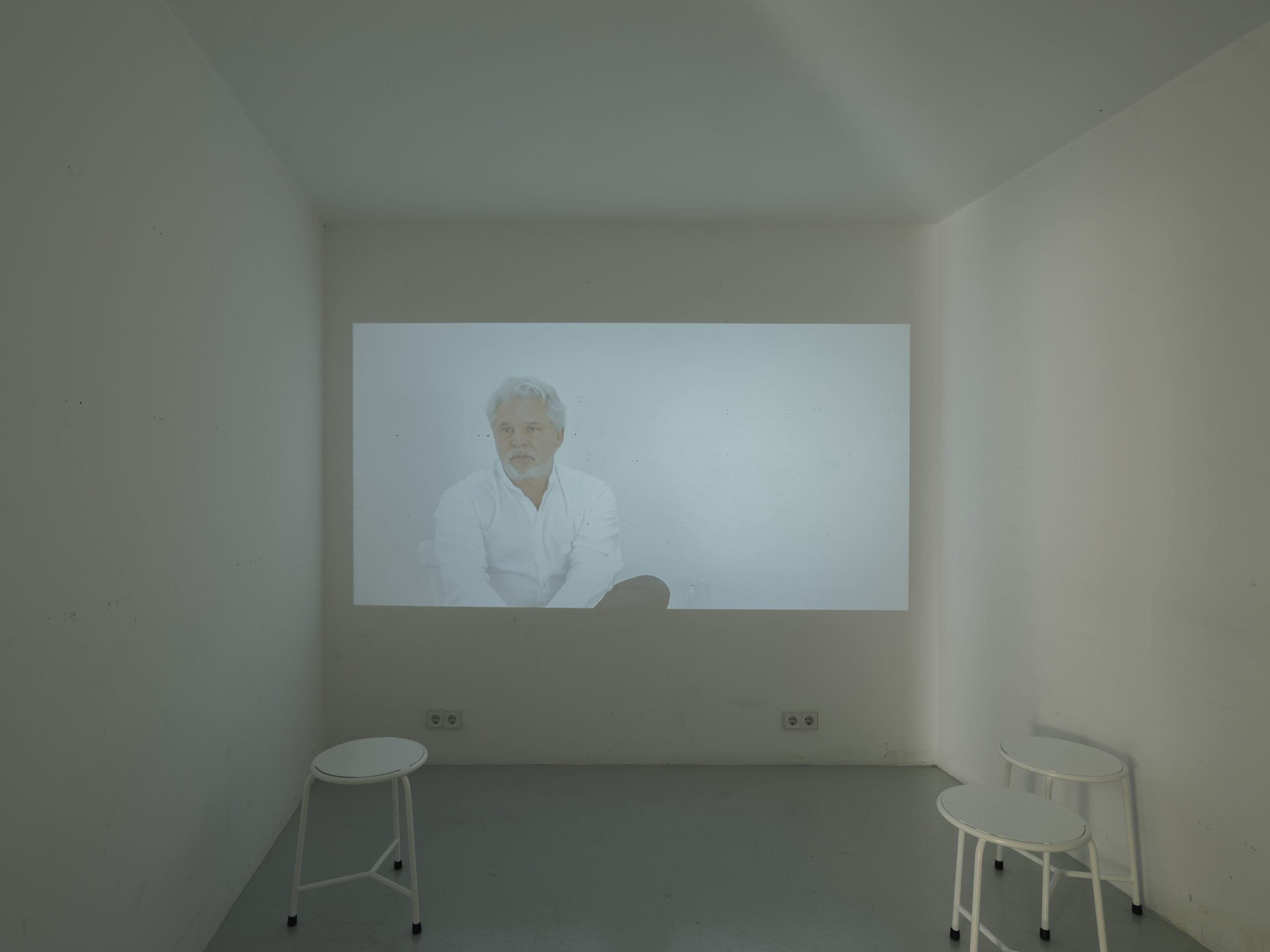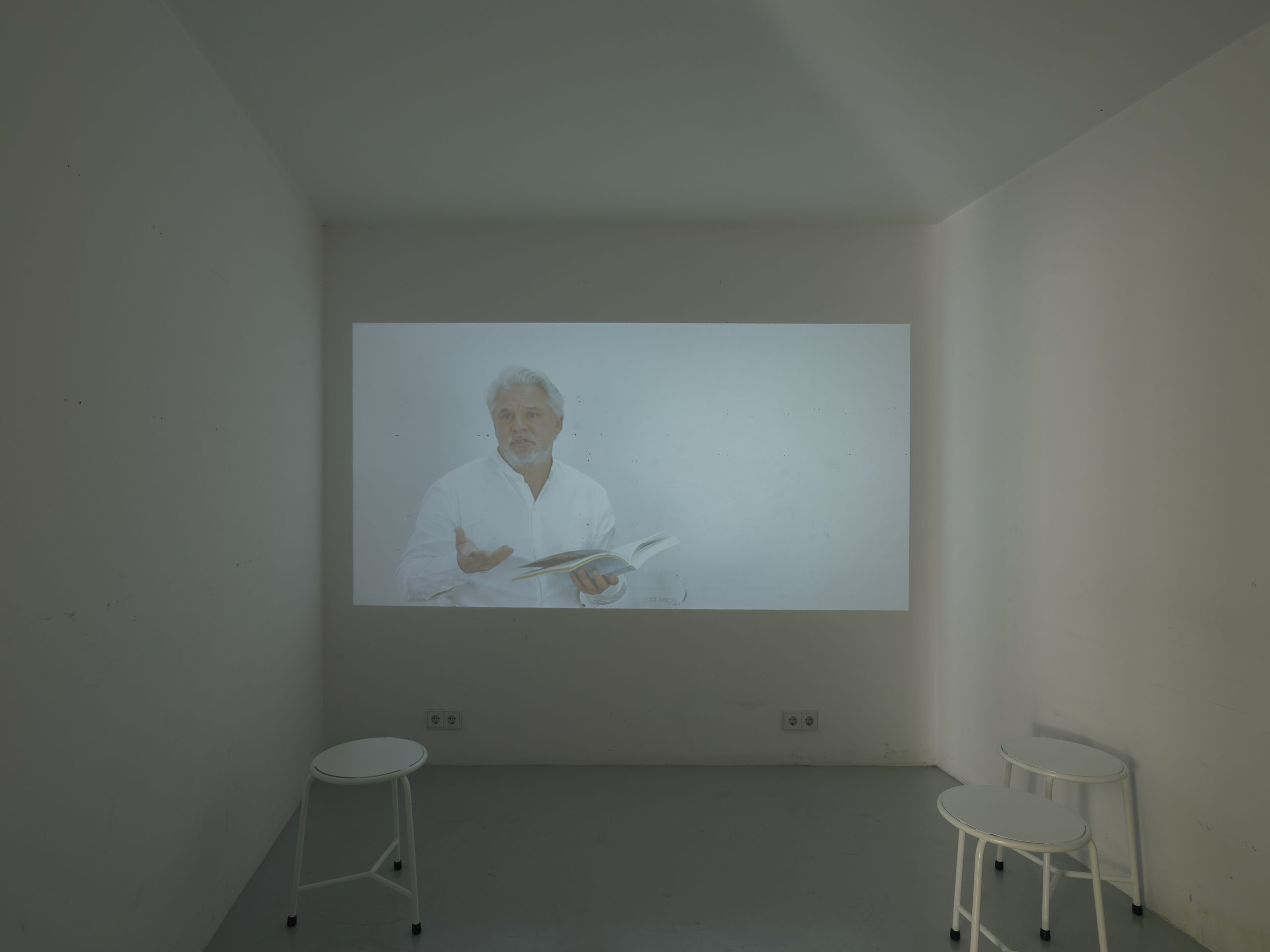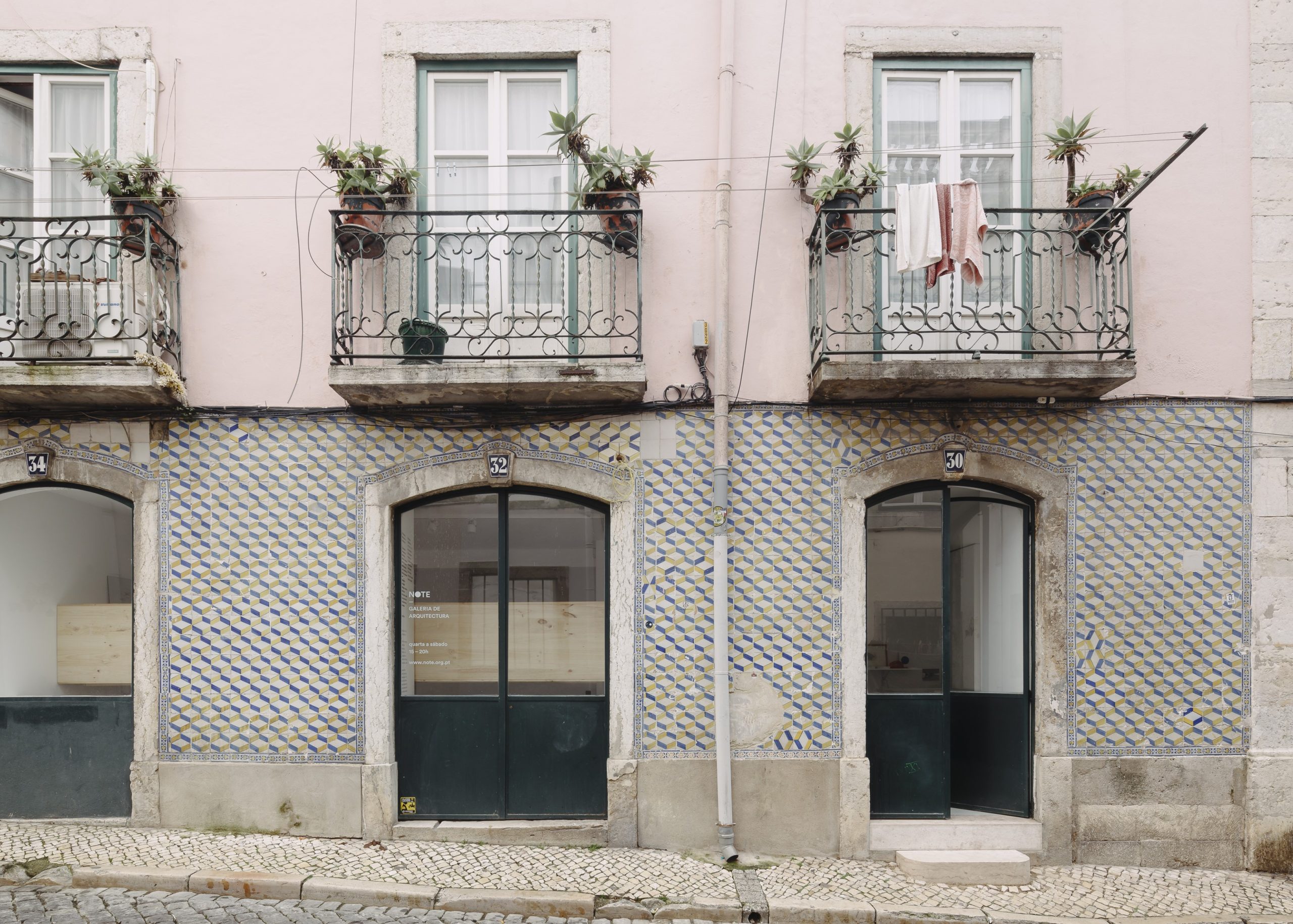João Miranda
joaomhmiranda@outlook.com
Architect and PhD candidate at the Department of Architecture at the Autonomous University of Lisbon (DA/UAL), Portugal. CEACT/UAL – Centre for Architecture, City and Territory Studies of the Autonomous University of Lisbon, Portugal
To cite this article:
MIRANDA, João – The substance of things. Estudo Prévio 25. Lisbon: CEACT/UAL – Centre for Architecture, City and Territory Studies of the Autonomous University of Lisbon, December 2024, p. 262-269. ISSN: 2182-4339 [Available at: www.estudoprevio.net]. DOI: https://doi.org/10.26619/2182-4339/25.1
Received on November 27, 2024 and accepted for publication on December 2, 2024.
Creative Commons, licença CC BY-4.0: https://creativecommons.org/licenses/by/4.0/
The substance of things
The publication The substance of things follows the homonymous exhibition [1] at NOTE – Architecture Gallery and documents the practice of the atelier José Adrião Arquitetos (JAA) through a selection of projects evidently grounded in processes anchored in a relationship with pre-existing conditions and under “a guiding principle when expressing the essence of a place, a space and its historical continuum” (ADRIÃO, 2023: 139). The exhibition The substance of things was curated by Hugo Santos Silva, who, through “over this period features archival cartographic material” (ADRIÃO, 2023: 139), constructs a hypothesis about JAA’s modus operandi based on six of the atelier’s projects [2] duly numbered and ordered by their archive registration numbers — 014 Ocreza, 024 Santa Clara, 150 Melides, 155 Saboia, 168 Santo António, 195 Santa Inês —, these projects were directly incorporated into the publication, maintaining the same logic.
This bilingual publication represents a reflective and textual extension of the exhibition, enabling a differentiated analysis of the projects through graphic content as well as written observations in essays by three contributors, which explore the ideas and practices that form the atelier’s identity. The published projects of JAA are confined to a “reflection on JAA’s body of work between 2002 and 2022, following the edition of No Beginning No End, JAA 2010–2020.” and serve as a starting point for discussing “the firm’s deliberately diverse approach to the practice of architecture” (ADRIÃO, 2023: 139).

Figure 1 – Photograph of the exhibition project at NOTE, Lisbon 2023
(Source: Arquivo do Atelier © José Adrião Arquitetos / © Hugo Santos Silva)
One of the unique aspects of the publication, compared to the exhibition, is the inclusion of essays that contextualise the atelier’s practice, as well as photographs of the exhibition project, highlighting details of how the projects were arranged within the gallery’s interior space. Without an evident chapter organisation, the publication begins with a reflective essay by the author, José Adrião, who presents the reader with two questions containing terms such as landscape and place — and also across time. [3]
Following this essay is a selection of five photographs by Hugo Santos Silva. The first evokes the exterior space of the city and the entrance to NOTE, while the remaining ones depict the path through the gallery’s interior, along the inner boundary of the space. These images suggest that the reader might be guided with their left hand, touching the interior wall, recreating the bodily experience of movement through the space. The first photograph presents a detailed view of a step in lioz stone, perfectly aligned on its upper face with the lower face of a stonework element, and a half-open door. The other photographs consist of general views of the gallery’s interior space, with varying perspectives but always including a horizontal wooden element, centered within the frame. These constructed elements form the core of the exhibition project conceived by JAA. The step signifies the creation of a (new) place and, consequently, a new project — 209 — for the atelier. The horizontal element, affixed to the gallery’s internal walls, was designed to accommodate the “panels” (SANTOS SILVA, 2023) of the projects, which include graphic content such as photographs, plans, sections, elevations, and sketches arranged at various levels. [4]

Figure 2 – Photograph of the exhibition project at NOTE, Lisbon 2023
(Source: Archive of the Atelier © José Adrião Arquitetos / © Hugo Santos Silva).
The terminology of “panels” used by curator Hugo Santos Silva, aims to represent a moment of association between various contents. This logic is referenced in the methodology of Aby Warburg (1866–1929) in Mnemosyne Atlas. In the exhibition, each “panel” contained a single element from each project, whether a photograph or a drawing, and had a distinct size depending on the type of content — establishing a dynamic and visual hierarchy. Conversely, the varying formats of each “panel” were standardised in the editorial process, and instead of a single “panel” per page, the publication typically introduces several “panel” across each spread, creating new relationships and different associations — thereby relating the graphic content of each project in a new form / format.
Regarding the written content in the publication, specifically the essays, the framing of JAA’s architectural practice is enriched by the contribution of António Guerreiro. His reflection offers an intellectual, methodological, and plural perspective on the practice of José Adrião and the atelier José Adrião Arquitetos (JAA), highlighting the careful approach and commitment to the context and history of each pre-existing condition, as well as the awareness of “a triple archè” that shapes the title: Architecture, Archaeology, Archive (ADRIÃO, 2023; 31).
The essays by Bárbara Silva and Hugo Santos Silva, in some ways, collectively emphasise the JAA atelier’s practice as one that is rooted in and guided by place. This practice stems from “invisible codes” (ADRIÃO, 2023: 41), never detached from the acts of photographing, recording, imagining, drawing, measuring, proposing, questioning, probing, observing attentively without prejudice, and “engaging with a new place as if there were no other way to proceed.” This approach, as José Adrião himself frequently mentioned during the guided tours of the exhibition, ultimately culminates in building and materialising.
The numerous photographs — whether of pre-existing conditions, often inhabited by the JAA team; of construction phases; of project redefinitions in situ; or even photographs featuring the individuals who guided the process (such as João — in 024 Santa Clara) reinforce the aforementioned acts and, above all, highlight a crucial characteristic for understanding the atelier’s practice, inherent to José Adrião: the journey. [5]
Due to the singularities mentioned and the complementarity described, the publication transforms itself into an autonomous and free-standing object — carefully designed graphically by João M. Machado in close collaboration with Hugo Santos Silva, in an exercise of continuity and interconnection between disciplines — which expands the exhibition experience by allowing the reader to explore each project in greater detail and with new layers of meaning. The format of the publication derives from Hugo Santos Silva’s photographs, creating harmony between the visual cosmos of the photographic reportage of the exhibition project (and the exhibition itself) and the editorial cosmos, making the publication a natural outcome of the photographic record [6].
However, like the exhibition, the publication does not reveal the origin or history of its title — something present in José Adrião’s memory from a previous project. Other memories were revealed during the exhibition through a compendium of photographs by José Adrião himself. This memory, of relative importance, is a reminiscence of past experiences and acquired knowledge, which resurfaced in 2023 for the exhibition project.
The substance of things adds “different perspectives” (ADRIÃO, 2023: 11) and significantly contributes to understanding José Adrião’s practice, presenting architecture as an act of discovery and revelation of place. The publication is intellectually tied to the thinking embedded in the exhibition project and to the various actions carried out during the exhibition process. Equally, this publication stands out for its editorial complementarity, adopting an associative approach integrated into the curatorial strategy [7], and for the way it interconnects photography (from the exhibition project), drawing, and critique, offering an associative experience that aligns with the exhibition’s strategy and vision.
In summary, The substance of things transcends the function of merely documenting the exhibition or serving as a simple catalogue exercise. Instead, it operates as a tool for critical analysis, allowing the reader to gain a deeper conceptual understanding of José Adrião’s work through the essays presented. This understanding includes the engagement with a new place, conceived as a genesis for the materialisation of processes within the disciplinary field of Architecture — the place, for José Adrião, acts as a catalyst for various actions.
Due to the actions of JAA, the place of NOTE – Architecture Gallery was transformed and was no longer the same after the exhibition The substance of things — its origin having been transported — revealed a new place through an “action for space” [8] and, as a result, offering a new perspective on it. Ultimately, it is possible to assert that the exhibition The substance of things lies at the genesis of new matters, as the invitation for the exhibition and the subsequent development of the exhibition project facilitated the creation of two (new) axes: the materialisation of a (new) project — 209 NOTE — initiated by the action of the step at Travessa da Cara 30, and the publication of The substance of things.

Figure 3 – Photograph of the exhibition project at NOTE, Lisbon 2023
(Source: Archive of the Atelier © José Adrião Arquitetos / © Hugo Santos Silva).
Post scriptum
The publication ends with a photograph by © Hugo Santos Silva, which can be interpreted as the general view of the detailed plan of the lioz stone step previously mentioned. The photograph presents an exterior perspective of the NOTE gallery (2023), where the reader can observe, in an integrated manner, the three elements: pre-existence (territory), place, and project (exhibition).

Bibliography
ADRIÃO, José – A substância das coisas / The substance of things. Lisbon: NOTE, 2023.
Interviews
ADRIÃO, José – process(es) on substance, 2023.
SANTOS SILVA, Hugo – process(es) on substance: a curatorial strategy & practice, 2023.
SILVA, Bárbara – NOTE: principle(s) & process(es), 2023.
Collections
Archive José Adrião Arquitetos (JAA).
Notes
1. The exhibition The substance of things (28.01.2023 ¾ 15.04.2023) was part of the exhibition cycle Work Processes, with overall curation by Bárbara Silva. The invitation from NOTE’s management to the JAA atelier was extended in September 2022, as mentioned by José Adrião himself during the final guided tour of the exhibition. The exhibition was curated by Hugo Santos Silva, while the exhibition design was conceived by the José Adrião Arquitetos (JAA) atelier.
2. However, another project was featured in the exhibition, appropriately included by the curator Hugo Santos Silva: the Enola project. Regarding its designation, the word Enola refers to the Enola Gay, the American-made B-29 bomber used by the United States Air Force during World War II. On 6 August 1945, Enola Gay became the first aircraft to drop an atomic bomb (Little Boy), targeting Hiroshima, Japan, and causing unprecedented destruction. The Enola project is an action (an intervention), described by both the curator and José Adrião. This action holds a distinctive character and possessed a presence that, perhaps at times, was imperceptible in the exhibition—not only in certain moments but possibly for some viewers as well. Enola was a requirement set by the curator, aimed at narrating the specific story of the action carried out by José Adrião. This requirement sought to reveal an intervention in the territory that would foster discussion and stimulate thought on various moments and possible meanings relating to the practice of the JAA atelier.
3. The questions are preceded by an excerpt from a conversation between Gonçalo Ribeiro Telles and João Nunes (2002).
4. The horizontal element held reference books significant to José Adrião, such as A Árvore em Portugal, Derek Jarman’s Garden, Main Entrance: Quinta do Monte 1983-1988, On the Necessity of Gardening: An ABC of Art, Botany and Cultivation, Super Normal: Sensations of the Ordinary, and other materials or items selected by the curator.
5. See, on this subject: “The journey, also influential in the projects, seems to appear here as Daphne for the places, a greater response that seeks to confer meaning to the work.”
6. The format of the publication was designed based on the horizontal orientation of Hugo Santos Silva’s photographs, allowing them to be presented in their true proportions and confined to the limits of the spread. Due to this editorial decision, the format also frames the written content by the authors and the graphic elements featured in the exhibition, following a logic of individualised organisation.
7. The curatorial strategy stems from prior research conducted by curator Hugo Santos Silva on questions centred around the relationship between the body and space. The experimental dimension is crucial for the curator, who aims for the space (and curatorial act) to seek a theoretical and reflective dimension, using this principle as a guiding theme for the development of his process.
8. See, on this subject, the quotation: “JAA proposes an action for the space of Note: a new step enables another entrance, another duration, a moment now lateralised discontinues the bifurcation of the space, thereby granting it unity. The method, between the object and the unnameable, extends to the exhibition, becoming both process and result, materialising another space” (ADRIÃO, 2023; 135).

